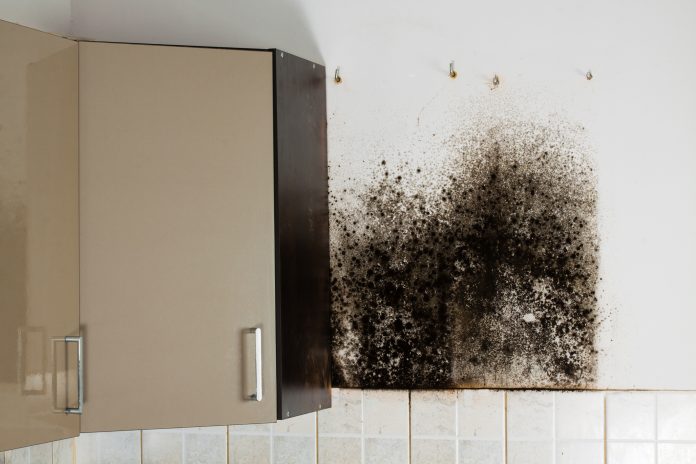The new Homes Act will see the issue of damp and mould put firmly on the radar but, says James Berry, technical manager of the Property Care Association, pioneering research could provide a breakthrough in its management
The current news agenda means there has been little debate around the Homes (Fitness for Human Habitation) Act 2018, which has recently been introduced.
The act is a new law to make sure that rented houses and flats are “fit for human habitation”, meaning that they are safe, healthy and free from things that could cause serious harm. The legislation had cross-party support.
The purpose of the act is to amend relevant sections of the Landlord & Tenant Act 1985 by extending its obligations to cover almost all landlords and to modernise the fitness for habitation test.
Where a landlord fails to let and maintain a property that is fit for human habitation, the act would give tenants a right to take action in the courts. The act came into force on 20 March 2019.
The changes ahead
In relation to the standards of accommodation that the landlord provides, this act does not introduce any changes. It still relies on the 29 hazards listed in Schedule 1 of the Housing Health & Safety Rating System (England) Regulations 2005, to define why a property may not be fit for human habitation, although a new section – 9A – inserts a covenant between landlord and tenant that the property is, and will remain, habitable.
However, what this act does is provide tenants with a route to claiming compensation when a landlord fails to take steps to address the issue, without having to wait for the council or Environmental Health to act. There are still exceptions for landlords. Most of this act only refers to England and while landlords are responsible for most things, there are notable exceptions:
- Problems caused by tenant behaviour – meaning that the tenant has behaved irresponsibly or illegally, the landlord may not have to fix any problems caused by such behaviour.
- Fires, storms and floods, which are completely beyond the landlord’s control.
- If the landlord hasn’t been able to get permission from certain other people.
It is without question that the first of these exceptions will provide the most contentious, especially with dampness and mould.
The PCA is well aware that dampness issues can sometimes be complex, defining when an issue is down to excessive moisture production, rather than adequate ventilation, could prove a grey area.
Finding a way to address this is a timely concern. Of significance is the collaboration between PCA and the University College London Institute for Environmental Design & Engineering (UCL IEDE) to develop a working formula that could transform the way damp is managed in homes.
Together we have been carrying out a Knowledge Transfer Partnership (KTP) to look into the issue of moisture in buildings – and following a two-year research project, have made a breakthrough, which is now ready to enter market development, to create a tangible diagnostic tool to tackle excess moisture levels.
The project could eventually have a significant impact on the quality of air indoors for hundreds of thousands of people across the UK and internationally. We have discovered that we can analyse conditions within a building in order to understand precisely why it is out of balance in terms of its moisture levels, and then prescribe the correct solutions to address the issue.
Of significance is the fact that we also have the potential to predict conditions, so properties can be protected proactively.
There’s a real demand for this solution and the PCA’s membership has supported its development both financially and by enabling the research team to tap into its expertise to create this new, revolutionary diagnostic technique.
Is adequate ventilation the key?
Condensation is the most common form of dampness in buildings within the UK.
We have also been vocal about our concerns in relation to ventilation not being installed and commissioned properly – a view that has been reaffirmed by a number of studies in recent years.
In cases with condensation and mould, it would be difficult for a landlord to argue that they have taken all the necessary steps to address the issue when the measures taken do not comply with Building Regulations.
Possible outcomes from the act could see a more proactive approach to dealing with damp and condensation, rather than the traditional reactive pattern. Other implications could include a need for pre-tenancy dampness surveys, including a check of the provision of dampness and ventilation.
This overview is by no means a comprehensive insight and ultimately this act will only be quantified by case law as the degree of ‘inhabitability’ is not quantified and the landlord has to be allowed reasonable time to rectify the issue.
That said, we have already been made aware of a number of tenants and housing associations acting upon the new legislation, which is a positive step forward.

James Berry
Technical Manager
Property Care Association
Tel: +44 (0)844 375 4301
Twitter: PCAPropertyCare
LinkenIn: Property Care Association





![[Video] Fireco: 80 new fire doors required for residential flats in London](https://www.pbctoday.co.uk/news/wp-content/uploads/2025/04/2024-06-01-Lords-view-one_1200x750_004-218x150.webp)








